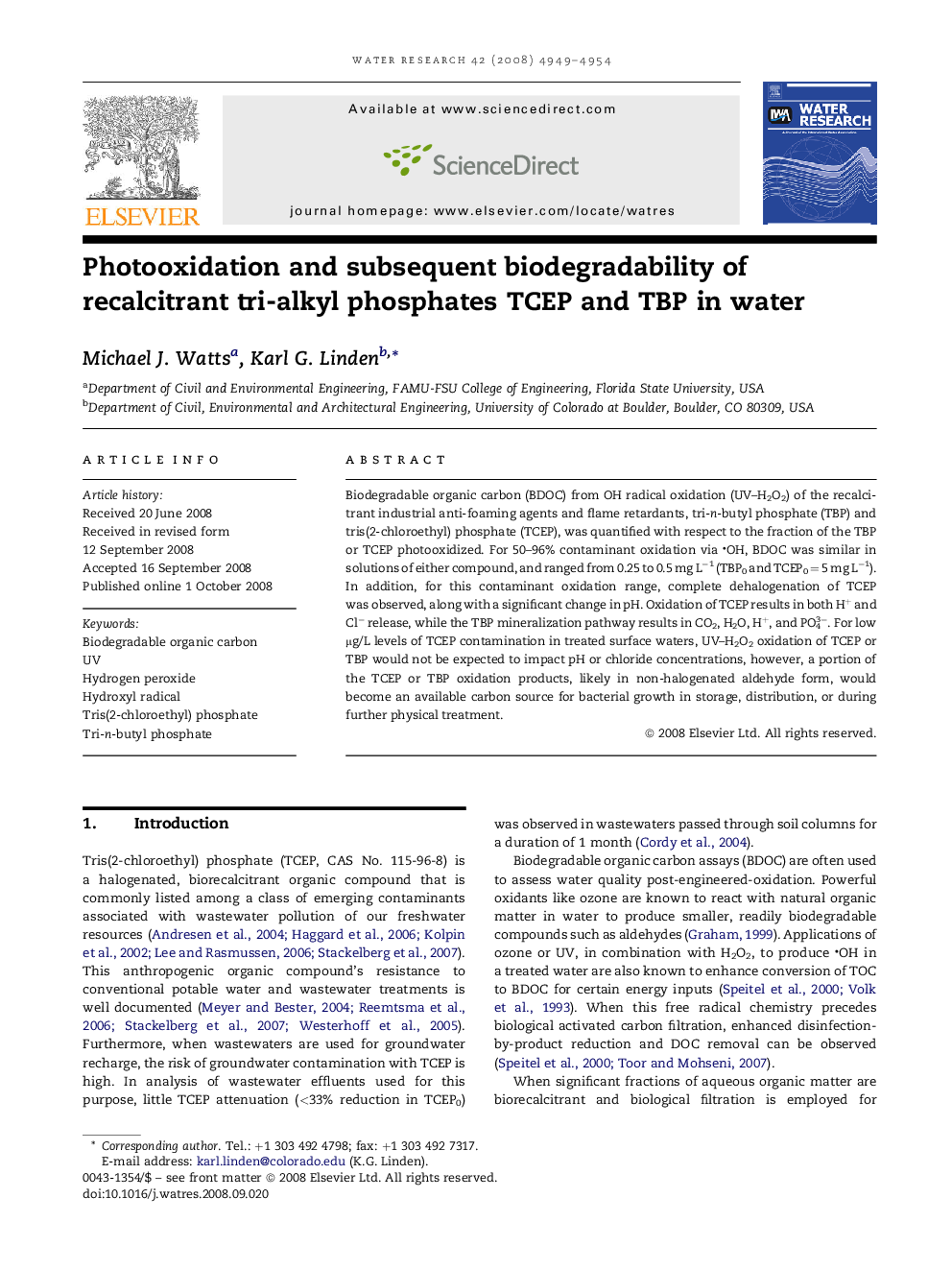| Article ID | Journal | Published Year | Pages | File Type |
|---|---|---|---|---|
| 4484625 | Water Research | 2008 | 6 Pages |
Biodegradable organic carbon (BDOC) from OH radical oxidation (UV–H2O2) of the recalcitrant industrial anti-foaming agents and flame retardants, tri-n-butyl phosphate (TBP) and tris(2-chloroethyl) phosphate (TCEP), was quantified with respect to the fraction of the TBP or TCEP photooxidized. For 50–96% contaminant oxidation via OH, BDOC was similar in solutions of either compound, and ranged from 0.25 to 0.5 mg L−1 (TBP0 and TCEP0 = 5 mg L−1). In addition, for this contaminant oxidation range, complete dehalogenation of TCEP was observed, along with a significant change in pH. Oxidation of TCEP results in both H+ and Cl− release, while the TBP mineralization pathway results in CO2, H2O, H+, and PO43−. For low μg/L levels of TCEP contamination in treated surface waters, UV–H2O2 oxidation of TCEP or TBP would not be expected to impact pH or chloride concentrations, however, a portion of the TCEP or TBP oxidation products, likely in non-halogenated aldehyde form, would become an available carbon source for bacterial growth in storage, distribution, or during further physical treatment.
